Emperors rule: keeping & breeding scorpions
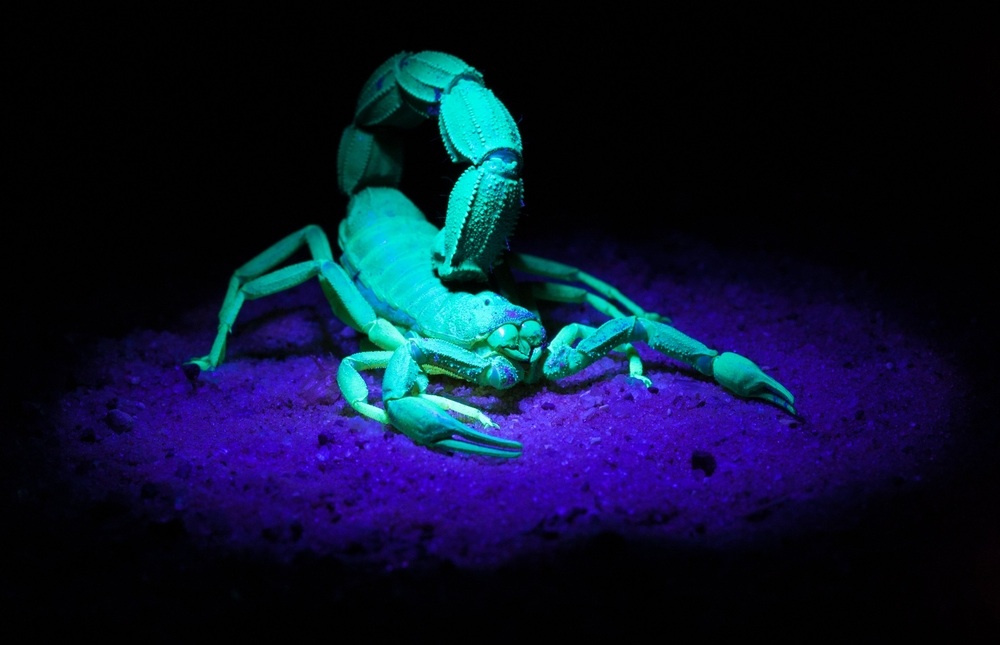
Scorpions are survivors. They've been on the planet for at least 430 million years, and can be found in a variety of habitats, from baking deserts to tropical rainforests. They're adaptable too - there is even a colony of yellow-tailed scorpions (Euscorpus flavicaudis) established at Sheerness dockyard on the Isle of Sheppey in the English county of Kent. They are thought to have been introduced there on ships from Italy nearly 200 years ago.
Deadly venom
There are around 1500 different species of scorpion alive today, and although they all can produce venom, the effect of this on people is rarely worse than a bee sting in most cases. Nevertheless, there are about 50 species that represent a serious threat to people, and about half of these can inflict stings that are potentially fatal.
Worldwide, scorpions are believed to cause about 10 times more human fatalities than snakes - adding up to some 200,000 deaths or more annually. Scientists have been investigating scorpion venom recently though, as its components may be beneficial in the treatment of human brain cancers.
Big claws are safer
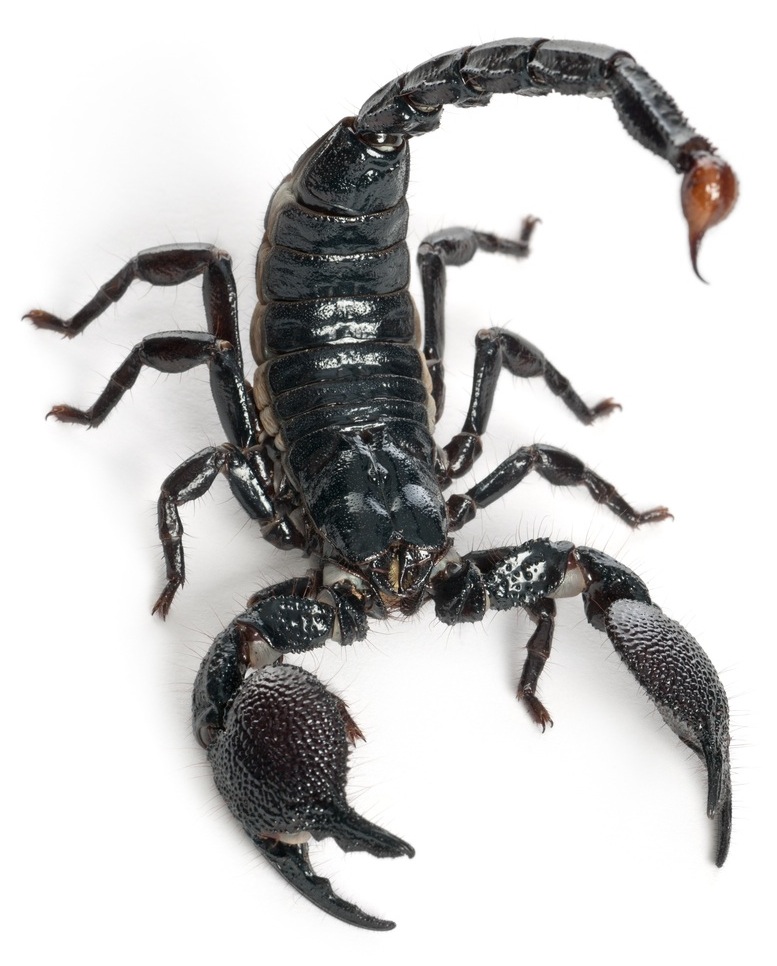
As a general guide, scorpions with small or relatively inconspicuous claws are likely to be more dangerous than those with large, powerful claws. Emperor scorpions are included in the latter category, and so in the UK, they do not require a special license to be kept, unlike some species.
Even so, on the few occasions when handling is essential, they should be picked up carefully using special forceps. It is not just the venom of the emperor scorpion but also its powerful claws that could be a problem, but take care to avoid lifting them high up, as the impact of a fall can easily be fatal.
This species is also sometimes known as the imperial scorpion because of its scientific name, Pandinus imperator. The rainforests of west Africa represent its natural habitat, where it lives in burrows. Termites form the natural prey of the emperor scorpion, and they will sometimes invade termite mounds, in search of both protection and food. They can grow to approximately 20cm (8in) in length, making them amongst the largest of all scorpions.
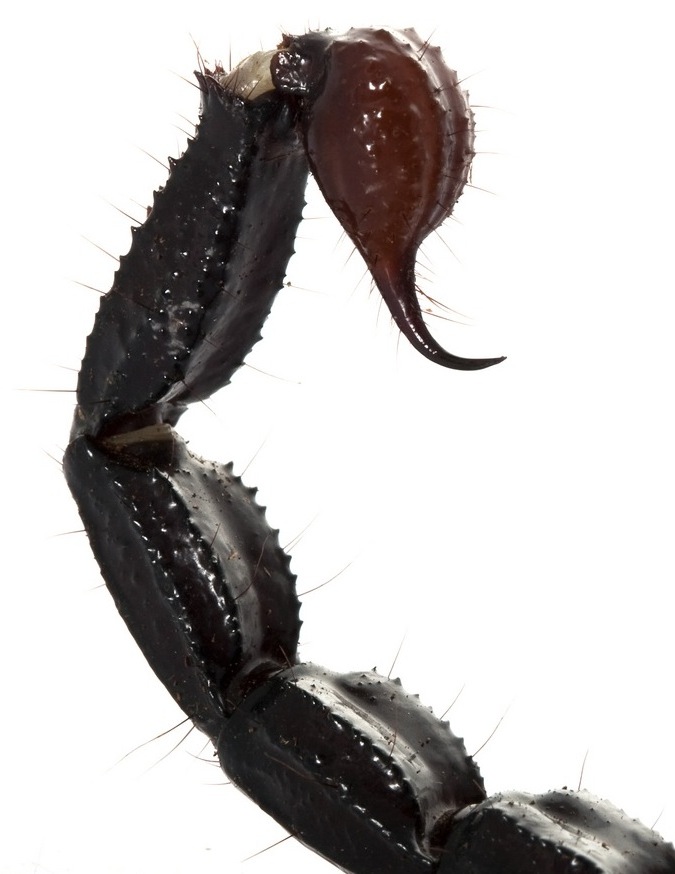
What are they?
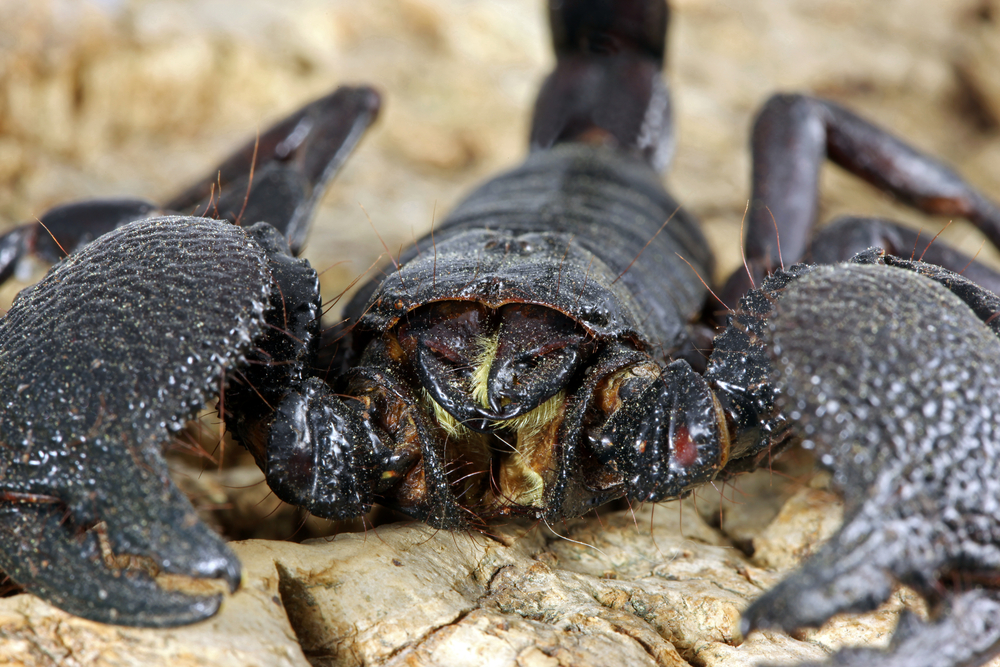
Scorpions are not insects, but arachnids, being related to spiders. Their bodies consist of two rather than three segments. The front part, comprised of the eyes, claws and four pairs of legs is called the cephalothorax or prosoma. The abdomen connects directly to the cephalothorax and is subdivided into the mesoma, and the actual tail called the metasoma, which incorporates the telson or sting at its tip.
Scorpions tend to be rather dull in colouration, ranging from yellow to black, but they have a strange ability to flouresce under ultra-violet (UV) light as show at the top of this page.
Accommodation
Housing emperor scorpions in vivarium surroundings is not difficult. Use a relatively tall enclosure, in the form of a converted aquarium, partly so there is a good depth of substrate into which they can burrow, and also because this tends to give a clearer view of the scorpions when they are in the open. Be sure to keep the enclosure covered though, not just to maintain the humidity but also to prevent any scorpions from climbing out, as they are surprisingly agile.
Orchid bark can be used to top off the floor covering, but T-Rex Jungle Bed® makes an ideal base, with a layer of about 15cm (6in) being placed in the base of their enclosure. Make sure the substrate is damp when it is put into the enclosure but not flooded, and avoid compacting the surface layer, so as to make it easier for the scorpion to burrow here.
Decoration can include low pieces of cork bark or upturned clay flowerpots for example set in the substrate, which will serve as retreats. Plants - either real or artificial should be included, although be prepared for the scorpions to disturbed a rooted plant by burrowing around it.
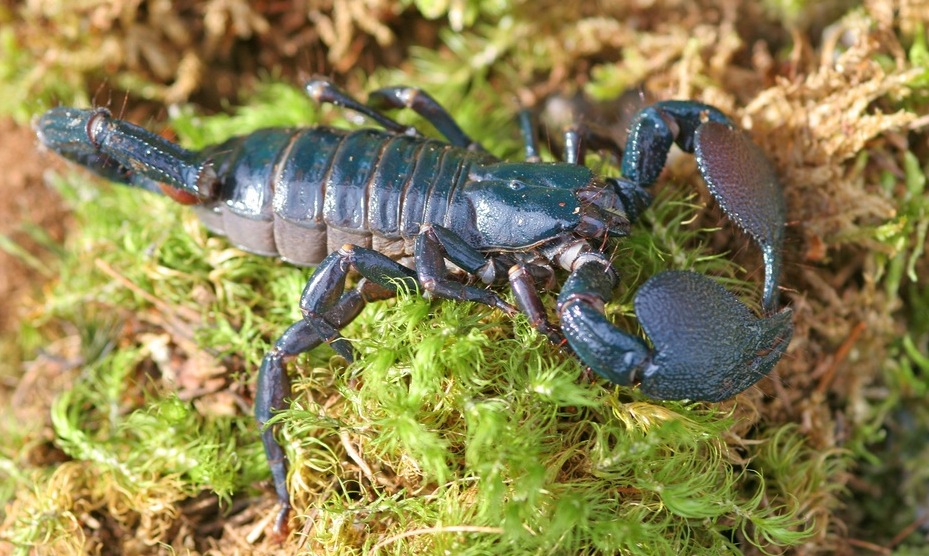
Live plants are best accommodated in small pots set directly on the floor of the enclosure. Add an area of moss as well, which helps to maintain the relative humidity when sprayed regularly with dechlorinated water, and a mister may be useful too.
A plastic water container, in the form of a plant pot saucer, should be set directly on a block of wood extending to the floor of the vivarium, so the scorpions cannot burrow beneath. This then prevents any risk of the container falling on to them. Be sure that the scorpions can enter and leave the water easily, putting a pebble in here if necessary. Emperor scorpions may spend up to 30 minutes immersed in the water - this can be especially common in the case of recently-acquired individuals which may be dehydrated.
A heat pad under thermostatic control can be used to maintain a suitable temperature in the enclosure of about 27-29°C (80-85°F), and regular spraying using dechlorinated water will be essential to maintain the relative humidity. This should be at least 80%, and can be measured easily with a hygrometer.
Feeding
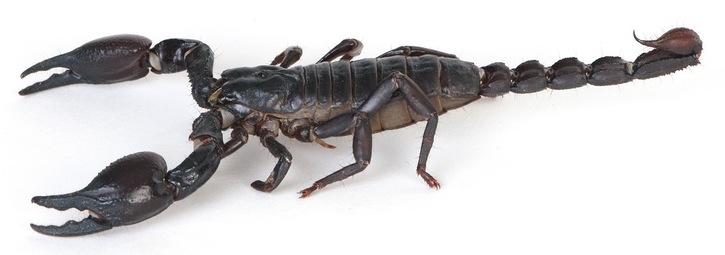
These scorpions will take a wide variety of food - both animate, such as live crickets, or inanimate, eating items as varied as prawns and beef heart. They only emerge from their burrows at dusk, and hunt for food during the night. A night-light can therefore be recommended for their enclosure, to give better viewing conditions as they are most likely to emerge when the room lights are off. They do not require any other lighting.
Offering food once a week should suffice for adults, but younger individuals require to be fed several times each week. You do need to be careful not to overfeed emperor scorpions, as they can actually become obese, to the point that they have difficulty in moving around. Slim your pet down under these circumstances by withholding food for a week or so, until it is clearly more mobile again.
The one time that scorpions are unlikely to want to eat is in the period preceding a moult, and the appetite of mature males can sometimes be rather picky, for no obvious reason. Keep females well-fed to reduce the possibility they might cannibalise some of their offspring.
Sexing
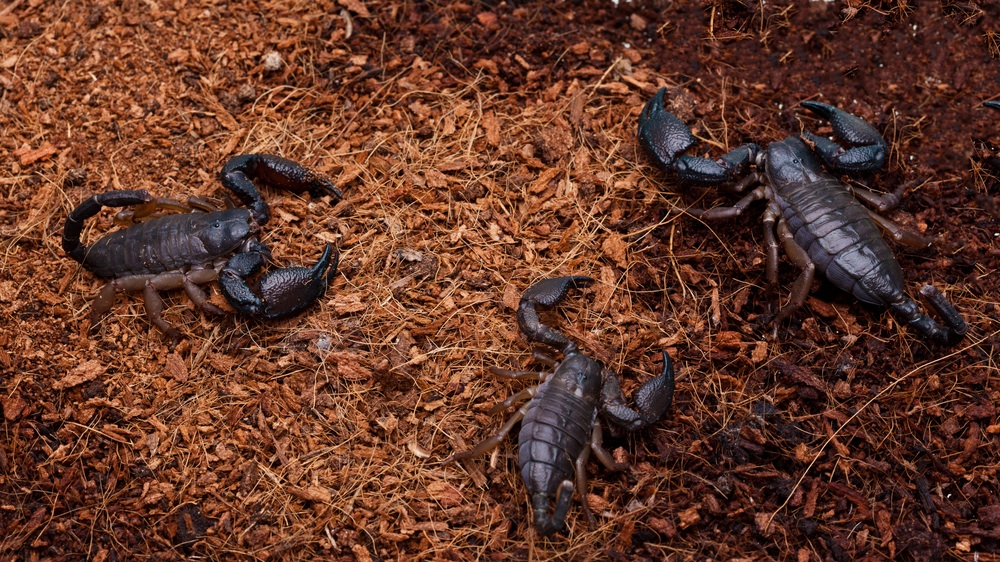
It is not easy to sex emperor scorpions without a magnifying glass. It is often said as a general guide that males are smaller than females, but obviously, this is not a reliable method. Instead, you need to look on the underside of the body, just behind the back pair of legs.
Here you will see the pectines, which resemble combs, running across the body. These may help the scorpions to pick up vibrations on the ground, with males having larger pectines than females. The area in-between, which is the genital opening, is more heart-shaped in females, and appears more oval in males. It may be best to transfer the scorpions to a clear-bottomed container so you can examine them safely from below.
Sexing need not necessarily be an issue however, because small groups can be housed together is a suitably spacious surroundings. Emperor scorpions will rarely fight, provided that they are all of similar size, were introduced to their quarters at the same time, and have a good choice of retreats there.
Amazing mothers!
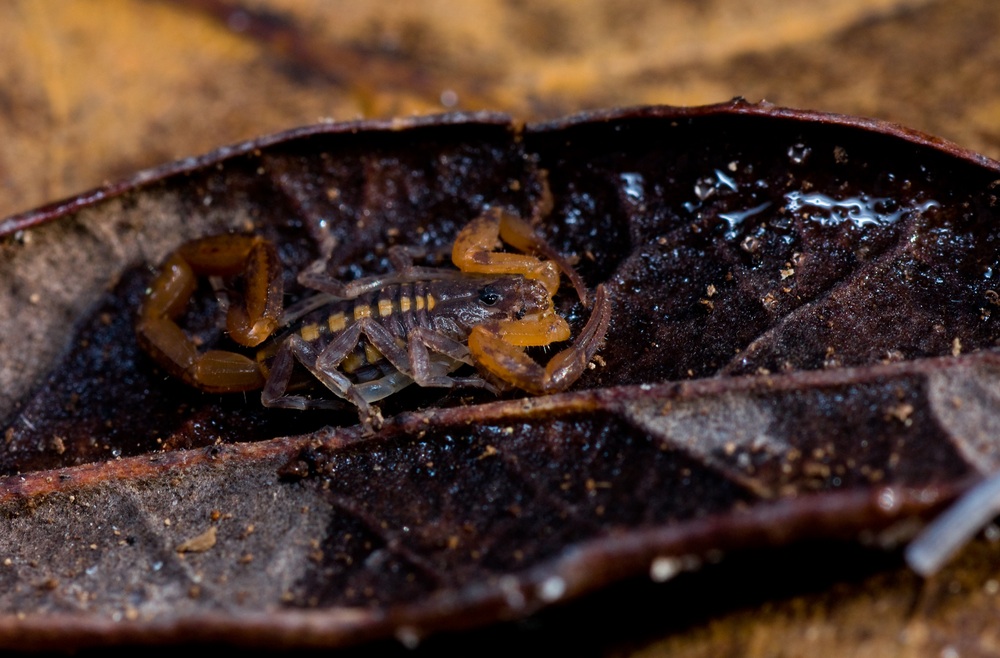
Between 9-18 months after mating, a female will then produce her offspring, which are whitish, tiny and helpless at birth, being described as scorplings at the stage. A litter may consist of anywhere from 1-20 scorplings, with the average being about a dozen.
She carries them on her back, even pausing should one slips off, so it can climb back up again, and kills prey for them. If threatened, she will defend them, and they will continue to retreat back to her until they are several months old, although during this period, they become increasingly independent.
Young emperor scorpions are relatively slow to mature however, taking up to two years or so to reach adult size, with females producing young for the first time once they are at least 15cm (6in) long. The main difficulty in rearing them relates to moulting. A high relative humidity in their quarters will help to ensure this proceeds smoothly, with their body casing being soft initially. The life expectancy of these invertebrates is likely to be up to 8 years on average.